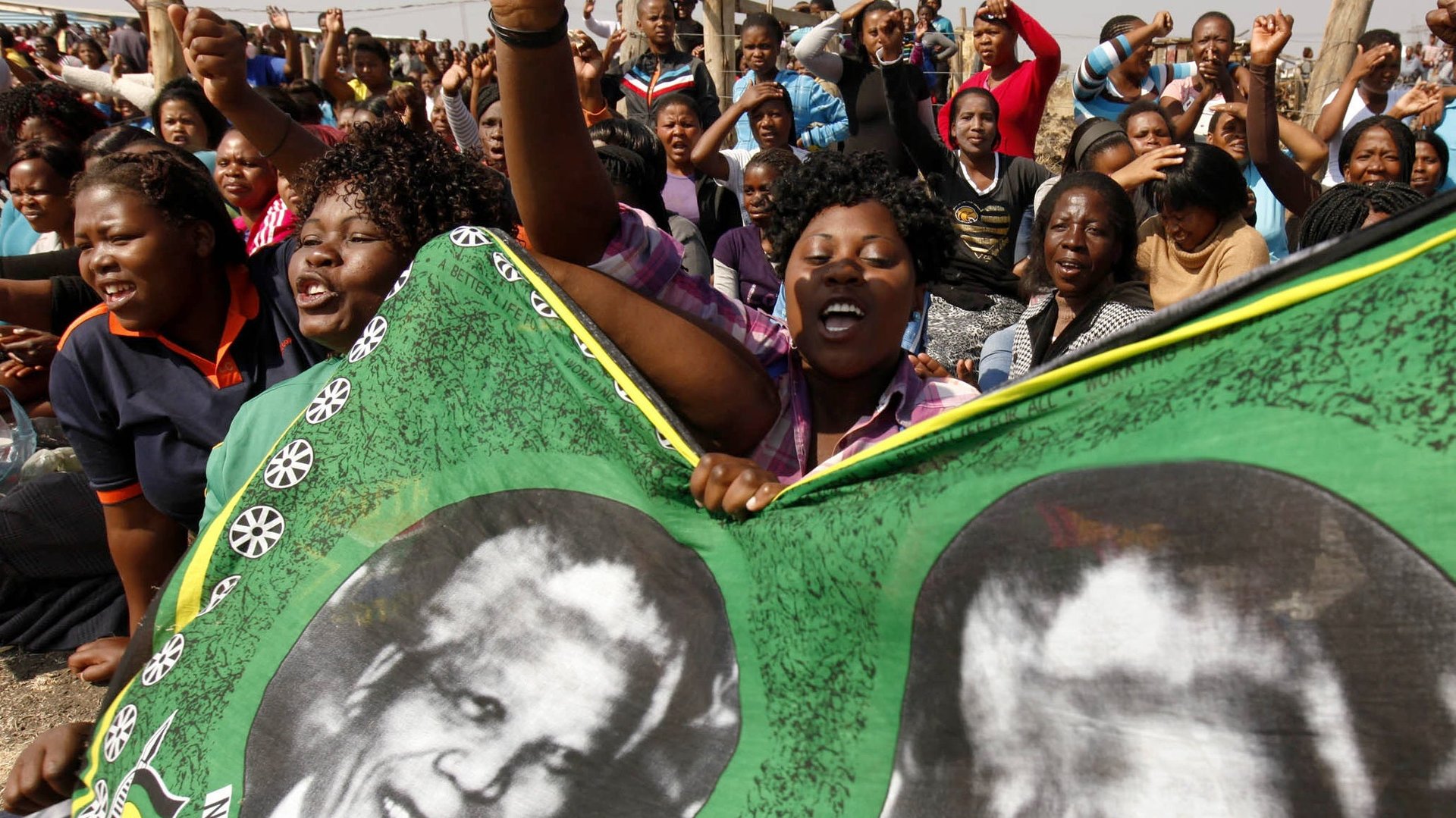Charts: The inequality of South African women on National Women’s Day
South Africa’s National Women’s Day (pdf) commemorates the march by 20,000 women on Aug. 9, 1956, to petition against the apartheid regime’s racist “pass laws.” But like the annual Women’s Month of which it’s now a part, the day is mostly reserved for platitudes. A senior politician—usually male—takes to the stage and pays lip service to the courage and determination of the exemplary women of 1956, adding a few well-meaning chestnuts about the role women play in society and the need for women’s empowerment.


South Africa’s National Women’s Day (pdf) commemorates the march by 20,000 women on Aug. 9, 1956, to petition against the apartheid regime’s racist “pass laws.” But like the annual Women’s Month of which it’s now a part, the day is mostly reserved for platitudes. A senior politician—usually male—takes to the stage and pays lip service to the courage and determination of the exemplary women of 1956, adding a few well-meaning chestnuts about the role women play in society and the need for women’s empowerment.
While this year’s commemoration was much the same, it did include the country’s first report tracking the status of women in the economy across five areas: education, the labour market, poverty, inequality and access to assets and credit. The report notes that despite some gains, in education for example (girls and young women fare better than their male counterparts in literacy), the scales remain tilted in favor of men in the job market, and women continue to experience more poverty than men.
Three pieces of data in particular provide a sober assessment of where women stand in South Africa’s economy:
While women’s wages lag behind those of men worldwide, the report reveals that more than 46% of South African working women earn R2,500 ($200) or less, as opposed to 33% of men.
In a country with a high official unemployment rate—25% in the second quarter of 2015—women are not only paid less when they do work, but also bear the brunt of joblessness more than men. While the narrow unemployment rate, which excludes people who aren’t seeking work, increased across the board between 2010 and 2015, it rose more for women (5.7 percentage points) than for men (4.5 percentage points).
Poverty may be gendered, but the starkest differences are still along racial lines. Using data from the National Income Dynamics Survey, the report found in 2012 that over 63% of black South African women lived below the national lower poverty line of R597 per month, as against just 1.6% of white women. Between 2008 and 2012, the proportion living in poverty didn’t change for black women; it decreased for white women; and it rose markedly for coloured women.